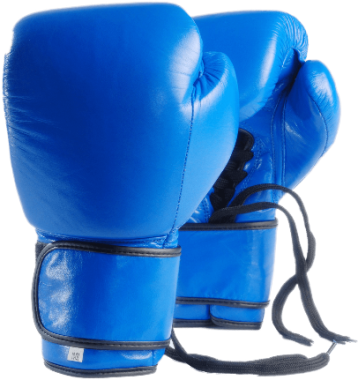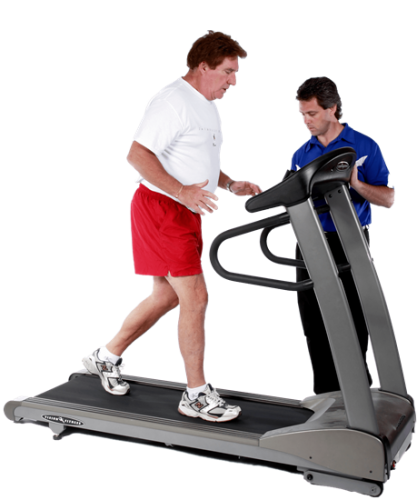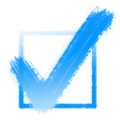SPECIALISTS IN
BASELINE TESTING &
CONCUSSION MANAGEMENT
CONCUSSION MANAGEMENT
Learn more about how we can help you

What is a ‘Concussion’?
A concussion is an injury to the brain or spinal cord, often as a result of a physical blow, shaking or collision.
Key Points About:
Concussions
50% of all concussions don’t involve a direct blow to the head and the majority don’t involve a loss of consciousness. Whiplash type injuries/mechanisms often create a concussion.
Do NOT rely on the opinion of the athlete, let alone a child or teenager (i.e: “I feel fine” or “I’m good”!) If they have suffered a concussion which is a brain injury, it will affect their judgement… If you as a parentsuspect the possibility of a concussion remove the athlete from play and have them examined.
Concussions are not in and of themselves dangerous, it is the mismanagement of concussions and head injuries that is dangerous. The most dangerous aspect of concussions is a return to play too early. A second concussion prior to complete recovery of the initial injury can have severe long term consequences.
The first 48 hours is a key period for diagnosis. A concussive injury will be most apparant to a trained clinician during this period. Get your child evaluated by a trained doctor.
The reality is that CT Scans (CAT Scan) and MRI offer very little value towards the diagnosis of a concussion. These are used to evaluate more serious head injuries. That being said only a doctor should be determining whether such studies are warranted or not. If you can’t get your child evaluated by a doctor right away then go to emergency. The vast majority of the time the trip will be unnecessary; however the cost of not going when necessary could also be fatal or permanently disabling.
That night let the athlete sleep, the previous belief that they should be constantly woken is wrong. Watch them to make sure they are not in distress or experiencing problems breathing but let them sleep … sleep heals.
Constant rest is not necessarily the best medicine. Treatment methods are rapidly evolving and we know now that resting for even a week is NOT necessarily the best approach. Appropriate activity will help the recovery. A trained clinician can best direct this approach.
The First 24-48 Hours
What to do…
Depending on your level of confidence you may or may not want to go to the closest emergency room. The goal at emergency will be to examine them for severe head trauma; such as a fracture or cranial bleed where a ruptured blood vessel is bleeding within the skull (intracranial haemorrhage – ICH). While there are different types of ICH which I won’t explain for this article’s purposes, lCH is very dangerous and must be dealt with immediately. If your child is unconscious or there is evidence of any the following then a trip to emergency is recommended to rule out ICH:
- Loss of consciousness at the time of the injury
- Confusion or disorientation after the injury
- A severe headache (especially increasing) alongwith nausea and/or vomiting (especially recurrent)
- Evidence of deteriorating mental status
Especially in younger athletes (or elderly individuals) symptoms from a ruptured blood vessel within the skull can sometimes come on slowly i.e. beyond 24 hours. If your child complains of one of more of the following symptoms it would warrant a trip to the closest emergency room.
- Loss of consciousness at the time of the injury
- Confusion or disorientation after the injury
- A severe headache (especially increasing)
- Evidence of deteriorating mental status
- A severe headache (especially increasing)
- Unusual behavior or confusion
- Progressive or worsening symptoms
- Weakness, numbness, slurred speech
- Di culty with eye movements
- Seizure
- Di culty waking up or arousing
- Discharge of clear uid or blood from the nose or ears
The next step regardless of whether they have been assessed and cleared at emergency or not it is to have yourself or your child evaluated and at a local clinic that specializes in managing concussions. It is ideal to be evaluated within the first 48 hours of the injury; variations from normal cognitive baselines are most apparent during this time and thus the ability to rule out concussion from whiplash injuries of the neck is easiest.
It is normal and common that a concussed athlete will act lethargic and sleepy and during the initial 24 to 48 hours and it is appropriate to let them sleep. DO NOT constantly wake them. Doing so will impair their recovery. By all means monitor them and regularly check on them. If you notice in particular that their breathing is distressed or that they are in any other way under duress, or any of the above listed ICH symptoms begin to develop then I recommend taking them immediately to emergency. Otherwise let them sleep.
Electronics
I would recommend at least limiting if not completely restricting their cell phone use. Very limited texting is ok but not watching any videos on the phone. Watching television (i.e. on a larger screen at typically a distance) is potentially ok, but watching video on a small screen like on a cell or computer at generally very close range (inches to a couple feet) is potentially very taxing on the eyes and brain. It is also important to restrict any visual technology use after dark and close to bedtime. Generally this is always a bad idea but especially so for an injured brain. The principle is to NOT isolate them socially, but direct them to allow both their eyes and brain some rest from the typical extended hours that the average student spends on electronics. Use can be gradually increased back to normal over time following the same type of aggravation of symptoms scale that will be explained later and will be followed in home exercises and drills.
Physical Rest
While we recommend physical rest for the first 24-48 hours, we do NOT recommend forced isolation into a “dark room”. Research and clinical experience has demonstrated that the dark room isolation doesn’t improve recovery rates and often increases anxiety and depression. If the athlete voluntarily chooses to just sleep and remain lethargic during the initial 24-48 hours, let them. That being said beyond the initial 48 hours they should NOT be encouraged to sleep all day, this creates both sick behaviour and disrupts normal sleeping habits.
The most important piece of advice to stress is that until the patient has been evaluated outside of and in addition to the emergency room, it is important to NOT allow your child to return to play or engage in ANY activity which could lead to any type of whiplash type injury or head contact of any kind. Remember a concussion is NOT dangerous. Mismanagement of a concussion and too early a return to play by reliance on symptoms and how the athlete “feels” IS dangerous.
Once we have evaluated your child, depending on the degree of ongoing symptoms we will begin treatment. Treatment may include visual, vestibular or physical rehab. Physical rehab will include spinal exercises and balance exercises and what is typically called a Return to Play Protocol (RTP). This will involve a graded progression through non-contact physical exertion; beginning with light aerobic exercise, followed by moderate levels of aerobic non-contact activity (sport and non-sport specific), followed by heavy levels of non-contact activity (sport and non-sport specific). The athlete must remain symptom free during and through each stage prior to progressing. Symptoms must NOT reappear for a minimum of 24 hours for progression to occur. If symptoms do reappear within that 24 hour period then the athlete will return to the next lowest stage of activity that they were able to maintain symptom free. Once asymptomatic status is achieved through the final stage of RTP we then want to ensure that the athlete has achieved/maintained pre-injury cognitive baselines. At that point they can transition into the controlled setting of a full contact practice. Once they demonstrate normal playing behaviour in unrestricted practice they may return to a game situation.
Cognitive Rest
The physical symptoms of concussion vary greatly such as headache, sleep disturbance, and dizziness. It also produces deficits in short-term memory and learning, attention and multitasking. Based on the severity of symptoms, the overall level of impairment may make full attendance at school impossible or ill-advised. Schoolwork and the school environment can exacerbate symptoms, so the extent of school participation must be carefully considered.
The goal with all aspects of recovery is to be aware of and empathetic and accommodating of symptoms, but not afraid of them. Thus realize that the patient will have diminished endurance to physical and mental tasks. They will NOT be able to maintain their normal level of performance and activity. That being said symptoms do not need to be feared and completely avoided. As we outline in the next section (Treatment) approach activities which elicit symptoms in the following manner; if any activity brings on symptoms allow the student to rest. Generally symptoms of less than 5/10 might be encouraged to be worked through. If through rest they recover from their symptoms within 5 minutes, then they can continue with the activity. If recovery requires more than 5 minutes rest, or exceeds a symptom score of 5/10 then they should stop those activities for the day.
Aggravation of symptoms should not exceed a 5/10 because primarily it will lead to the patient feeling horrible for a day or more. This will sometimes loose the athlete a day in the recovery process. While a limited occurrence of this won’t create permanent harm it will none the less loose them a day of school and rehab. We will advise you through this process.
Some students may require a few academic accommodations and we will be happy to provide written recommendations for your child’s school. Basic accommodations for concussion include notifying teachers of the injury, refraining from gym class and other physical activities, taking breaks to control symptoms (e.g. putting their head down, resting at the nurse’s office etc.), and taking extra time on given tasks. Generally testing prior to full recovery is not a fair evaluation of the students ability and/or knowledge.
When a concussion is severe, additional accommodations may be warranted. Dramatic symptoms and memory impairment may indicate temporary removal from school, enrollment in homebound education, or half day attendance until symptoms improve. In addition, students with sensitivity to light and noise may need to eat lunch in a quiet place, avoid auditorium programs, or wear sunglasses to lessen symptoms. Students with severe memory problems may be unable to learn information as quickly or accurately as before. They may also feel that they have learned information but are unable to recall it. In these cases, it is helpful to provide students with cueing (e.g. multiple choice instead of free recall, note cards that contain useful formulas) or allow them to use appropriate notes or books when completing tests. Cognitive rest can also be increased by simply reducing a student’s overall workload. For example, a 50 item homework assignment could be reduced to 25 items by completing every other item, essays can be shortened, and redundant assignments or items could be eliminated.
Certainly, all accommodations will not be appropriate for all classes or all students. Concussion presentations and severity vary among students and accommodations should be tailored to each case. In the end what must be realized is that this is a concussion is a brain injury and beyond physical limitations cognitive functions such as problem solving, mental calculations, reading and memory tasks can be even more taxing than the physical activity. It may be helpful for you as parents to have a meeting with the guidance counsellor or principal to establish which recommendations could be implemented.
SO WHAT CAN WE DO TO
HELP YOU?
Concussion Management
There are still many misconceptions about concussions and what should be done when an individual is concussed. We primarily follow the lead of the University of Pittsburgh’s Medical Centre (UPMC) which is one of the leading concussion centers in North America.
A concussion itself is NOT dangerous BUT what IS dangerous is the mismanagement of a concussion. Reliance on symptoms alone especially with young athletes is dangerous. Returning an athlete back to play too early IS dangerous. If you suspect a possible concussion do NOT let yourself or your child return to play until they have been evaluated by a clinic specializing in concussions. Baseline testing is a key to a faster and safer return to play.
We try to manage concussions from 2 perspectives:

Baseline Testing
Establish a pre-injury cognitive baseline
- ImPACT Test
- NeuroTracker
- Binocular Vision Screen
- Vestibular Screen
- Ocular Motor Screen
- Musculoskeletal Testing
Please CLICK above for more information



Clinical Management
In our evaluation we will determine what functional issues and resultant symptoms are a problem. Treatment will then follow controlled intentional stimulation of symptoms through a variety of drills and exercises. Management will involve both in clinic and at home exercises/drills. In clinic management may involve some or all of the following:
- Altitude Simulation
- NeuroTracker Training
- Vision Rehab
- Vestibular Rehab
- Manual Therapy and Whiplash Rehab
Please CLICK above for more information
Our approach focuses on pre-injury cognitive testing and post-injury active care and education to get the patient reintegrated into their normal lives as quickly as possible. The critical caveat to this statement is that the patient does NOT partake in any activity which poses any danger to another hit to the head or potential whiplash related injury. This policy remains in effect until the client is cleared following completion of standardized return to play protocols and subsequent restoration of objectively quantifed cognitive baseline measurements
We will provide any required letters for school and coaches/leagues as part of our service at no additional charge. If you have any questions or concerns about your child’s care, please feel free to contact me directly either through my cell phone 416-937-3343 or email docfletch@beyondsports.ca.
Baseline Test Expectations
A basic test will require approximately 30 minutes in clinic. A comprehensive baseline evaluation will require approximately 90-120 minutes in clinic. The tests are not indicative of intelligence or anything beyond a baseline of how the brain normally functions. For this reason there are no reports or summaries provided at the end of the test. However if any problems are found such as binocular vision problems or vestibular dysfunction we will provide a consultation to parents to discuss what was found and what are the recommended action steps.
If your child is concussed and it is NOT feasible to return to our clinic for testing and examination, we will ask for a standard medical release signed by the parents/legal guardian and we will provide baseline testing details to your chosen health care practitioner at no charge. Please contact us for more information on pricing.

